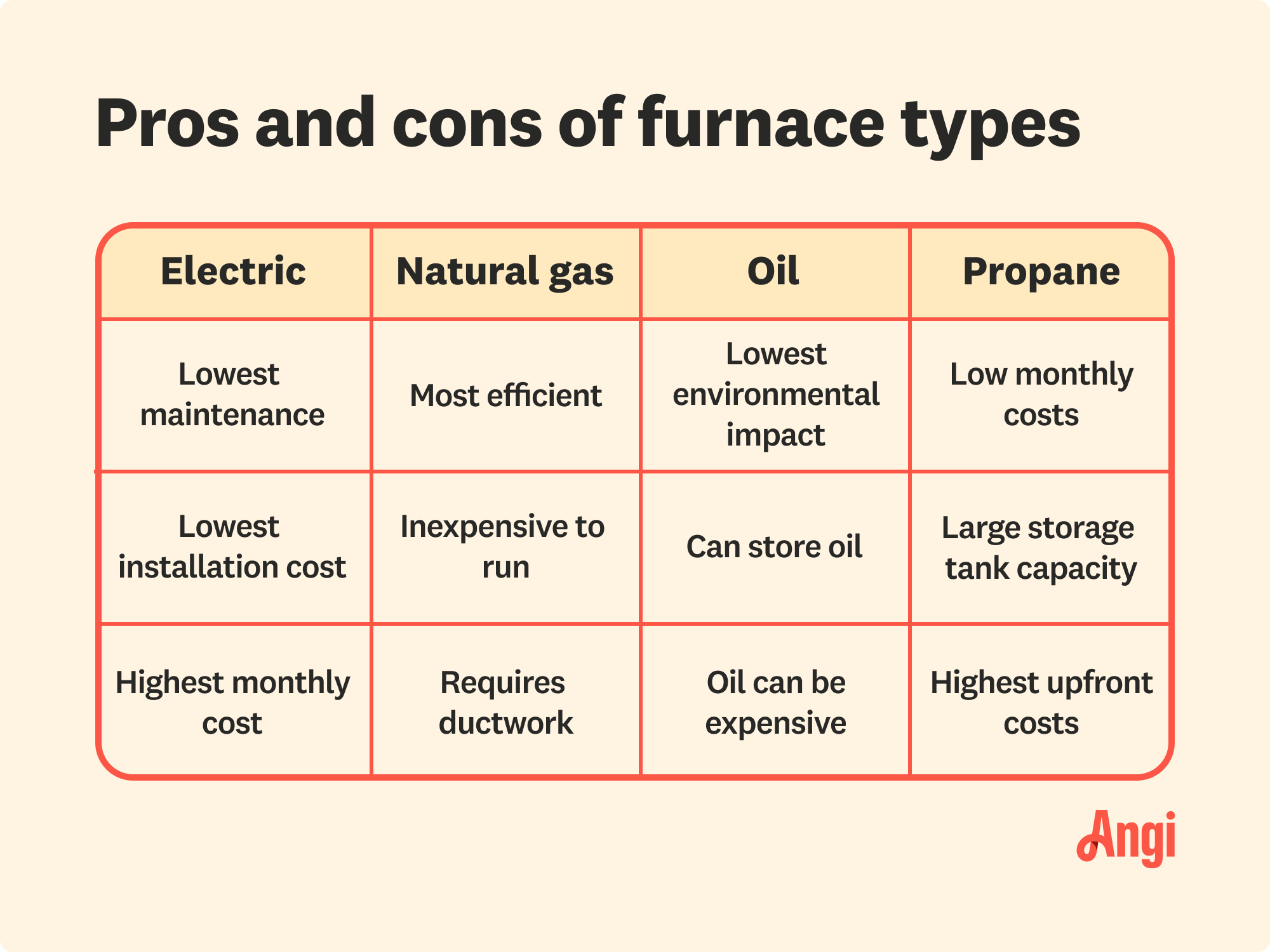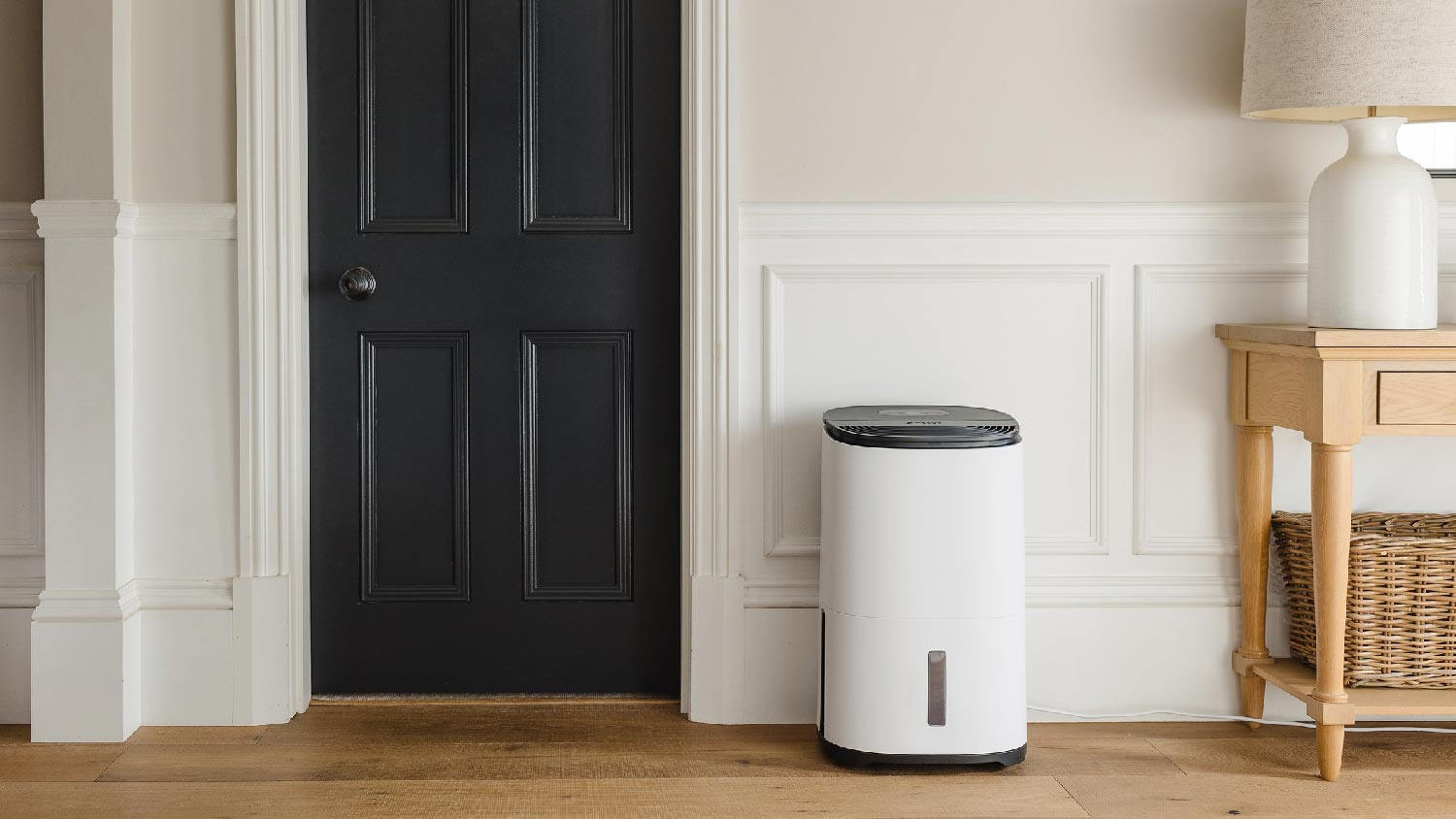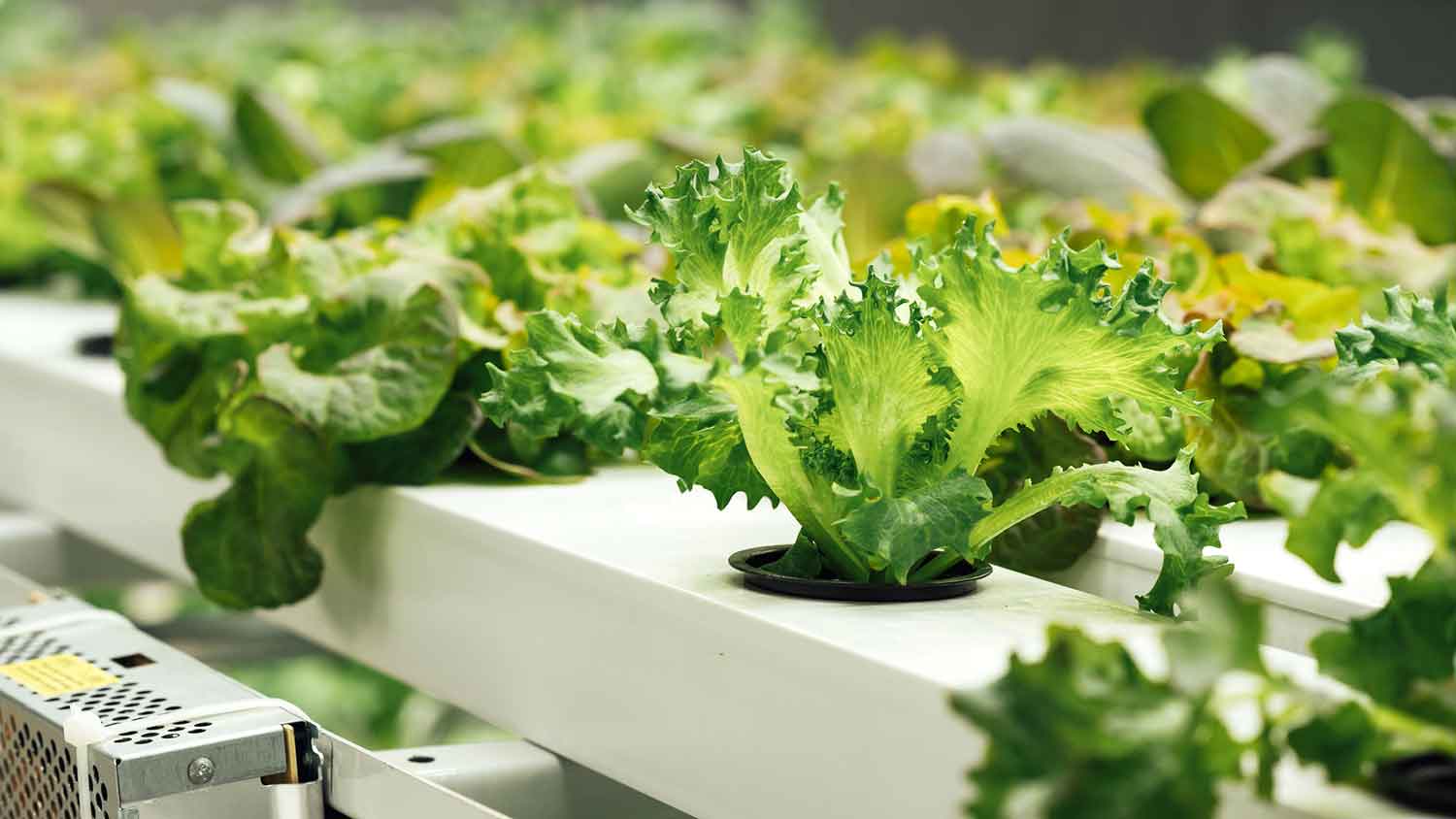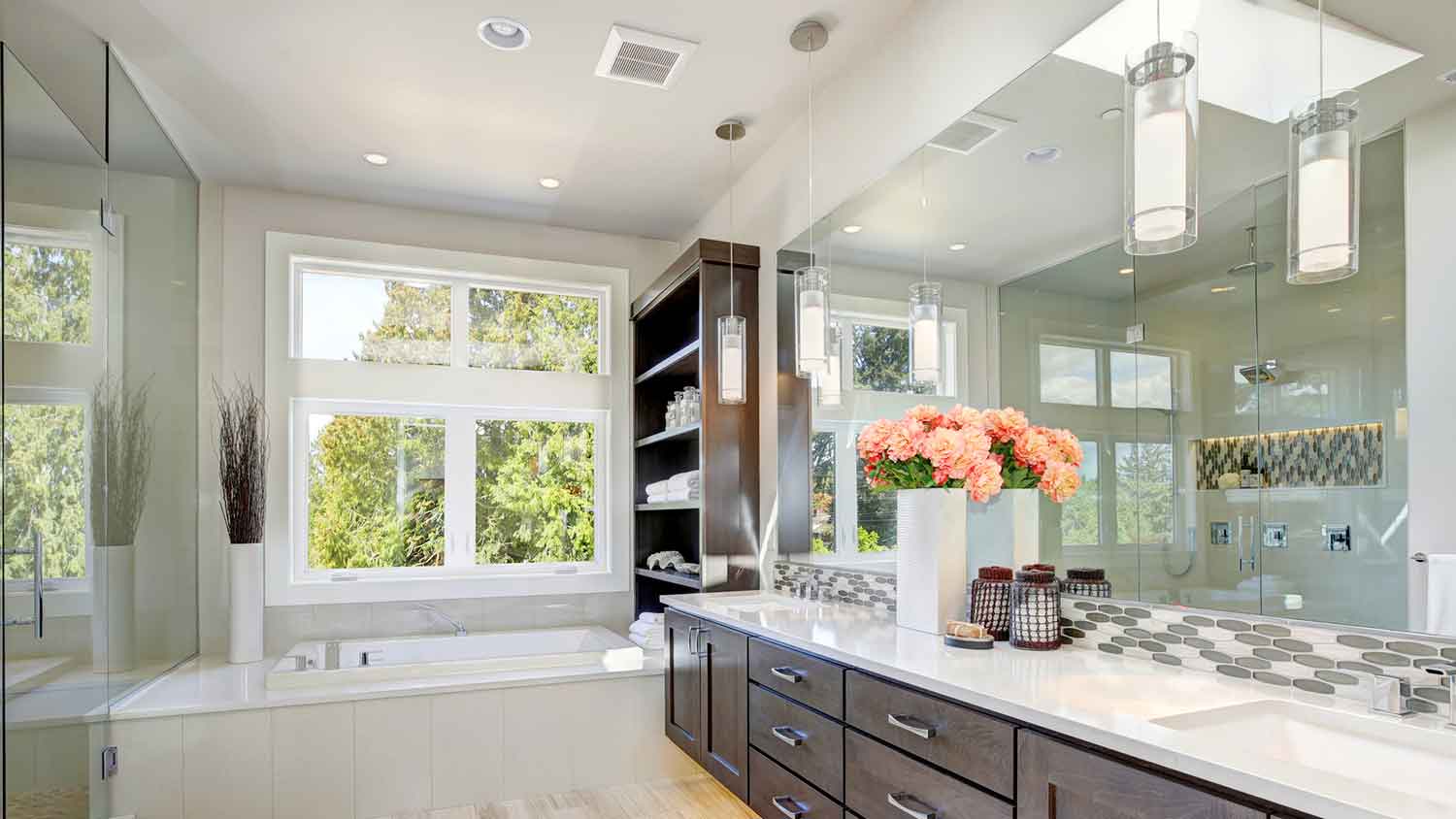How Much Does a New Furnace Cost? [2025 Data]
A new furnace costs $4,800 on average, but the final total for parts and labor will depend on type of furnace, size of your home, and other factors, like efficiency and brand. Rates may range from $150 to $13,100.


You probably haven’t had to install a new furnace recently because they last 20 years on average. So if you haven’t gone furnace shopping in a while, they might look a little different than your current unit. New furnace installation costs can fluctuate, but anticipate spending between $2,819 and $6,879 on average.
Furnace Installation Cost Breakdown
While it would be great to think about the cost of a furnace as a one-size-fits-all price, it's not that simple. There are different sizes and types of furnaces, and even the brand can play a part in the overall cost.
Size
Furnace capacity is measured in BTUs, or British thermal units, with each unit measuring the amount of heat needed to raise the temperature of one pound of water by one degree Fahrenheit. An average home will need a furnace with about 80,000 to 100,000 BTUs per hour. You can also determine what furnace size you need by figuring about 30 to 60 BTUs needed per square foot.
Here's what you can expect to pay for a new furnace, on average, by BTUs:
| Home Size | BTUs Needed |
|---|---|
| 1,000 square feet | 30,000–60,000 |
| 1,500 square feet | 45,000–90,000 |
| 2,000 square feet | 60,000–120,000 |
| 2,500 square feet | 75,000–150,000 |
| 3,000 square feet | 90,000–180,000 |
| 3,500 square feet | 105,000–210,000 |
| 4,000 square feet | 120,000–240,000 |
| 4,500 square feet | 135,000–270,000 |
| 5,000 square feet | 150,000–300,000 |
Type
The type of furnace—yes, there's more than one—can also impact what you'll be spending. Even though all furnaces heat your home, the way they are powered can be different.

Here's what the different types of furnaces generally cost:
Efficiency
While the more efficient furnaces are often the most expensive, it’ll be worth it to your wallet in the long run. The less heat wasted through ductwork, pipes, or a chimney, the more heat there is available to warm up your home.
High-efficiency furnaces have an annual fuel utilization efficiency (AFUE) rating of 96% or higher. Mid-efficiency furnaces have an AFUE rating of 90% to 95%, and low-efficiency furnaces have an AFUE rating of 80% to 89%.
Labor
In most cases, labor costs for installing a new furnace can run from $75 to $100 per hour. Labor costs can vary by location, though; for example, if you live in a place with a higher cost of living, you can expect labor costs to be higher.
Permits
In some locations, it’s required to have a permit to install a new furnace. While this isn’t necessary for every city and municipality, this additional cost could run between $400 and $1,500. Your local furnace installer will be able to tell you if a permit is needed in your area.
Removal of an Existing Furnace
In most circumstances, if you’re installing a new furnace, you’ll need to have your existing furnace removed. Most local HVAC contractors can dispose of the old furnace for you during installation but will charge a fee. The fee to remove an existing furnace can range from $60 to $330, depending on your location.
Ductwork Installation Cost
Depending on the age of your existing unit, you might need to install new ductwork when installing a new furnace. If your existing ductwork is incompatible with the new furnace or is insufficient to heat your home, your HVAC tech might suggest installing new ductwork to make sure your home is heated properly. Installing new ductwork will cost about $2,000 to $5,000.
Furnace Maintenance
While the cost of furnace maintenance won’t be hitting your wallet at the time of installation, it's essential to keep it in the back of your mind. Regardless of the type of furnace you choose, it’ll need tune-ups and maintenance at least once a year to hopefully avoid major repairs. Typically, HVAC maintenance fees cost between $60 and $550.
DIY vs. Hiring a Pro
Installing a furnace is not a job to handle on your own. A furnace installed incorrectly could be a health and safety hazard. The furnace must be properly connected to vents and gas lines to prevent the spread of carbon monoxide, a deadly gas, around your house. Save yourself the headache and hire a pro to do the job right.
“Whenever there are fossil fuels used in any appliance, such as a furnace, fireplace, clothes dryer or cooktop, we install carbon monoxide detectors,” says Bob Tschudi, general contractor in Raleigh, NC. “This is required in most states and municipalities and is a good safety measure, as even the most expensive appliances break down eventually.”
We've provided the average cost of installing a new furnace across the U.S. so you have an idea of what to expect:
How to Save on the Cost of a New Furnace
You might be heating up at the thought of spending a lot of money on a new furnace, but there are some ways to save on the overall cost. Comparing the type of furnace you need along with different brands is a great way to save money upfront, even before the installation. Here are few other ways to save money on the cost of a new furnace:
Ask for quotes from multiple HVAC professionals to ensure you’re getting the best deal.
Scope the internet and mailers for deals, coupons, and rebates from installers.
Try to learn the age of your existing furnace. Save money every month to replace it versus financing, if possible.
Tax Rebates on Eco-Friendly Furnaces
According to EnergyStar, gas furnaces that are 97% or more efficient and some oil furnaces are eligible for a tax rebate. This credit is effective for those furnaces purchased and installed from January 1, 2023, through December 31, 2032, and can be worth up to 60% of your total project cost, up to $600.
How Angi Gets Its Cost Data
Home is the most important place on earth, which is why Angi has helped more than 150 million homeowners transform their houses into homes they adore. To help homeowners with their next project, Angi provides readers with the most accurate cost data and upholds strict editorial standards. We’ve surveyed over 10,000 real Angi customers about their project costs to develop the pricing data you see, so you can make the best decisions for you and your home. We pair this data with research from reputable sources, including the U.S. Bureau of Labor Statistics, academic journals, market studies, and interviews with industry experts—all to ensure our prices reflect real-world projects.
Want to help us improve our cost data? Send us a recent project quote to costquotes@angi.com. Quotes and personal information will not be shared publicly.
Frequently Asked Questions
Warmed or cooled air can escape your home through drafty windows and doors. If you notice any gaps, be sure to caulk and seal them. You can also hire a local pro for an energy audit to get a list of energy-saving recommendations.
Finally, check your insulation. It can settle in over time and become less effective. The Environmental Protection Agency (EPA) estimates that you can save an average of 15% on heating and cooling costs (or 11% of total energy costs) by sealing leaks and making sure attics, crawl spaces, and basements have a nice layer of insulation.
Don’t skip the most basic maintenance: changing the filter. Filters 1 to 3 inches thick need to be replaced at least every three months. Filters 5 to 6 inches thick could go a year before getting changed. The filters catch dust and allergens, so it’s worth keeping them clean.
It’s a good idea to have a professional service your furnace every year before winter. They’ll inspect, clean, and repair as necessary. This could give you peace of mind that you won’t be calling furnace pros for help during a cold snap in the middle of February.
If your furnace is over 18 years old and having problems, it might be more economical to replace than repair. Remember: new models are much more efficient than older ones, so you stand to save on monthly energy costs. You might also consider replacing your furnace if you are upgrading your AC unit, as it can be more cost-effective to upgrade both at the same time.
When investing in a new furnace, it’s smart to do a home energy audit. That will give you a list of any projects that would help with efficiency, such as sealing or replacing windows and insulating the attic. You can also take this time to install a smart thermostat if you don’t already have one to make heating your home a breeze.
A furnace is a big unit where gas, heating oil, or electricity heats the air. The warmed air is then pushed back out through ducts and vents.
A boiler uses electricity, heating oil, or gas to heat water that is pushed into the room through a radiator. This is one of the oldest and most effective ways to heat a house, but radiators can also be unsightly and leave hot and cold spots in the room.
Heat pumps use a refrigerant to move heat from outside into the house and return it to the room through ducts and vents.





- Furnace Repair
- Air Conditioning Repair
- HVAC Repairs
- Furnace Installation
- Wood & Pellet Stove Repair
- Dehumidifier & Humidifier Repair
- Heat Pump Companies
- Swamp Cooler Repair
- Wood Stove Services
- HVAC Companies
- Commercial A/C Repair
- Geothermal Installation
- Air Conditioning Installation
- Boiler Repair
- 24 Hour Furnace Repair
- Geothermal Repair
- Heat Pump Repair
- Humidifier Installation
- Thermostat Repair
- Thermostat Installation
- Nest Installation
- Heating & Cooling
- Heating Repair
- Furnace Cleaning
- Furnace Tune-Up
- HVAC Technicians
- Subcontractors
- Furnace Maintenance
- Plumbing & Heating Companies
- Wood Stove Inspection
- Mini Split Installation
- Wall Heater Repair
- Duct Installers











